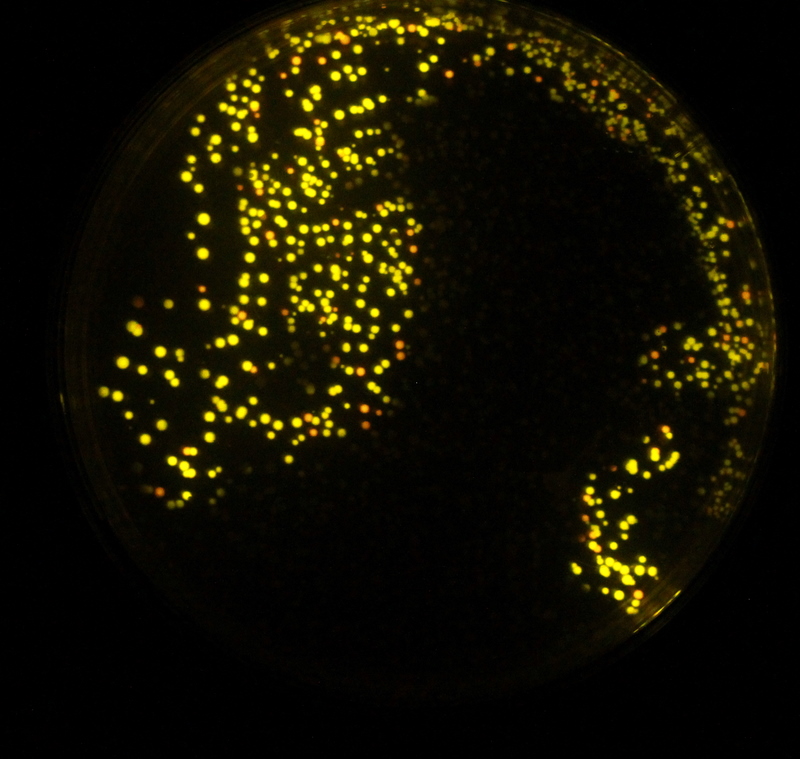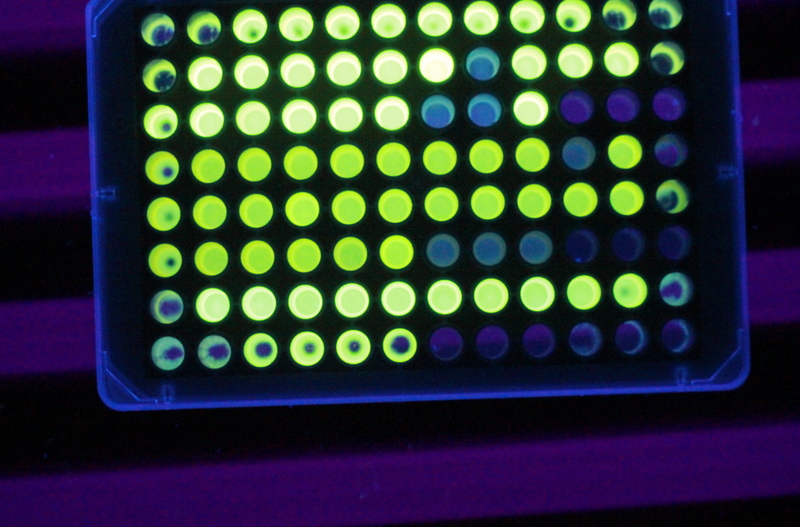Team:Cambridge/Notebook/13
From 2010.igem.org
| Line 12: | Line 12: | ||
{{Team:Cambridge/Templates/Day|Day=Tuesday 5th October}} | {{Team:Cambridge/Templates/Day|Day=Tuesday 5th October}} | ||
| - | |||
| - | |||
{{:Team:Cambridge/Templates/rightpic|src=Cambridge-LuciferinPlate.jpg}} | {{:Team:Cambridge/Templates/rightpic|src=Cambridge-LuciferinPlate.jpg}} | ||
| + | We spent much of today moving out of the lab, we also analysed the results of the plate reader experiment. Luciferin can be visualised by its fluorescence under UV light as shown on the right. | ||
Revision as of 22:47, 8 October 2010
By this stage term was about to start and members of the team had very little time. Nevertheless, due to the synthesis dramas described, work had to continue for some time.
Monday 4th October
Today we received extremely bad news. We had ordered 3 DNA constructs for synthesis by Mr. Gene on 19th August who had said that 98% of sequences of this length would have a turn-around time of 14 business days. We had become increasingly alarmed as time had gone on without the order being completed. We received our first contact from them at this time, informing us that the company was having problem with one of our constructs - luxAB. They said they had split the sequence into three parts and had to start from scratch, and that it might be 3 weeks until we got the sequence. This would take us until just before the Jamboree.
We moped for a bit and then came up with a plan, we asked them to send the completed sequences as soon as possible. We decided we would attempt to fuse them to the Xenorhabdus luminescens luxAB submitted by last year's Edinburgh team.
But there was good news as shown by the image on the right. We had believed that a number of our colour changes had failed due to sequencing results. But when we assayed our plates we found that some colonies had the desired phenotype. The plate on the right shows two distinct colour types.
Tuesday 5th October
We spent much of today moving out of the lab, we also analysed the results of the plate reader experiment. Luciferin can be visualised by its fluorescence under UV light as shown on the right.
 "
"

